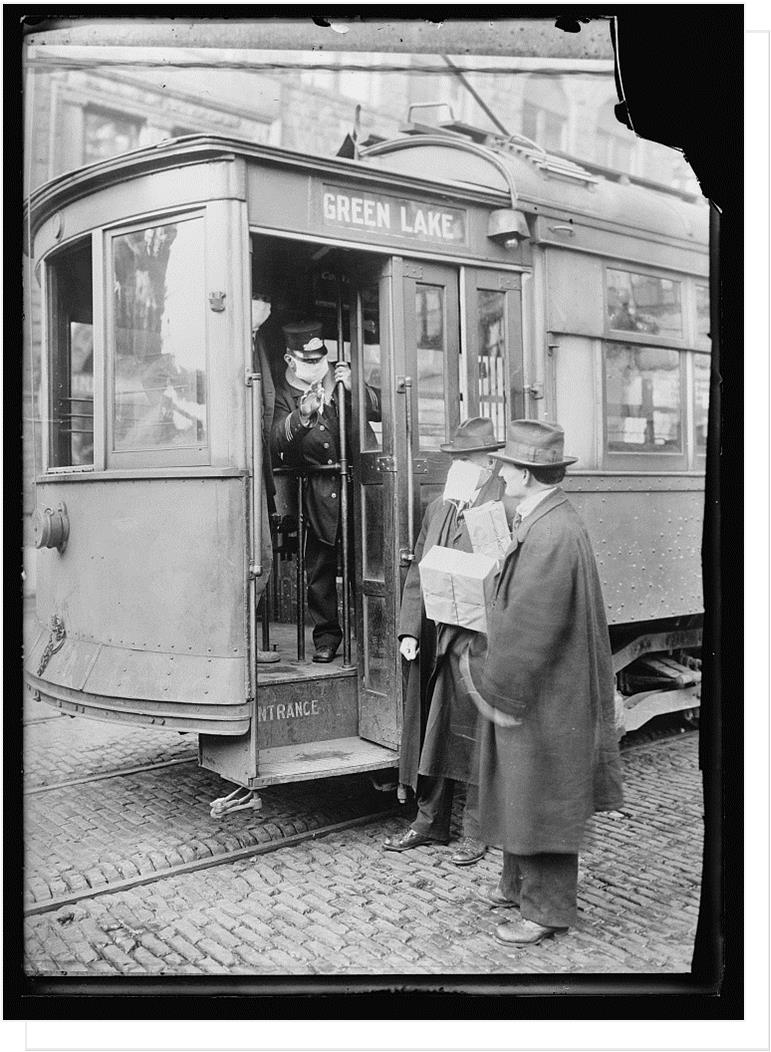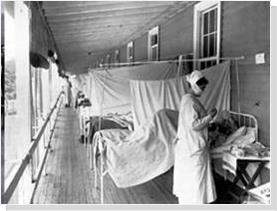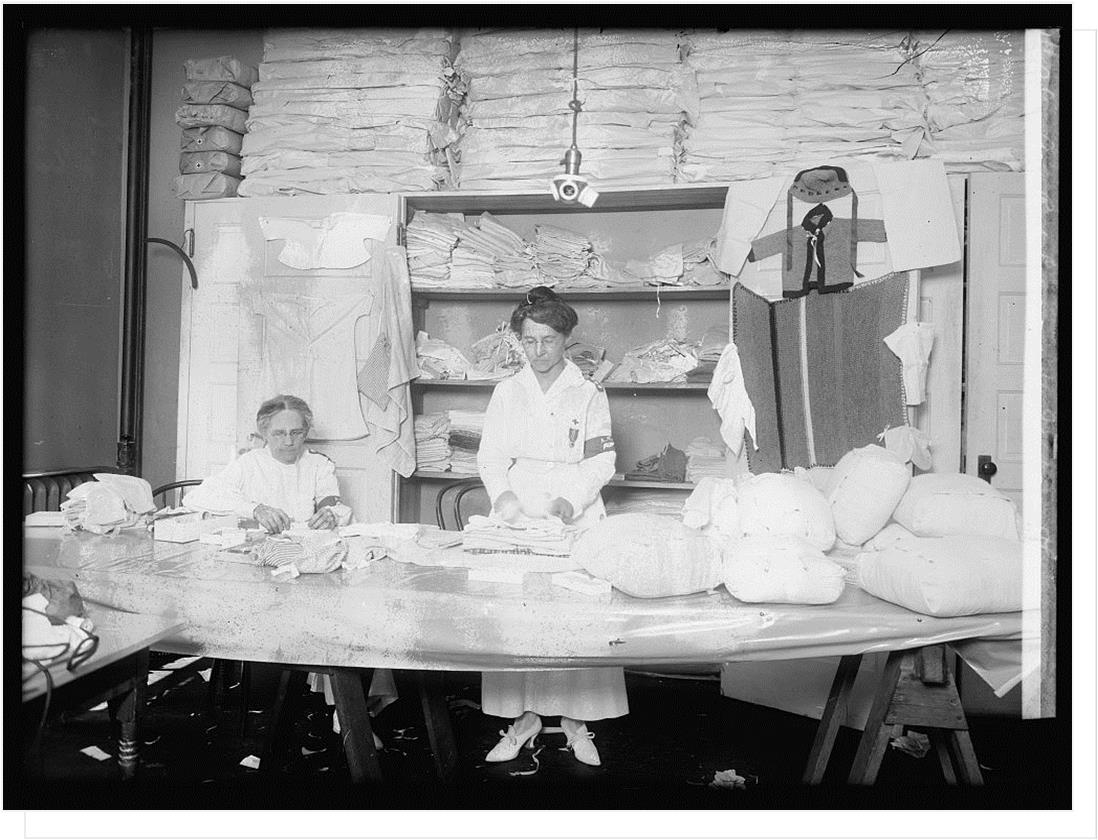
VIEW ON NATURE
An Unwelcome Visitor
By: Stephen Wendt

A loaf of bread cost a dime, slightly more than a 7-cent movie ticket or a 3-cent first class stamp. President Woodrow Wilson, a Virginian from Staunton, assuredly spoke of his 14 point world peace plan as 10,000 American soldiers a day poured into the World War I European Western Front in the autumn of 1918.
This is when the devastating Spanish Influenza (“Flu”) first arrived in Virginia at army Camp Lee near Petersburg, VA. From there, local soldiers dispersed the deadly Flu to their families in remote Tazewell and Wise Counties (Virginia) who were particularly susceptible given their lower immune systems.
The Flu pandemic infected about one-third of the world population, killing between 40 and up to 100 million people, or 5% of the world’s population! It killed 675,000 Americans and 45,000 troops, many never reaching Europe. It was mistakenly named the “Spanish Flu” because it severely infected the Spanish king (not fatally) in 1918. To maintain morale, wartime censors minimized early reports of illness and mortality in Germany, the United Kingdom, France, and the United States. However, papers were free to report the epidemic's effects in neutral Spain giving the impression that Spain was the epicenter of the flu. However, epidemiologists have since traced the likely origin to a US soldier on Christmas leave in Kansas where he contracted and carried it back to fellow troops sent overseas.
The Spanish flu is a highly contagious virus infection that attacks the respiratory system. Like all viruses, it’s a microscopic parasite smaller than a bacterium that insidiously invades and manipulates our cells to thrive and replicate itself. When an infected person talks, coughs, or sneezes, respiratory droplets are emitted where they can be inhaled by others. It can also be transmitted from contact with objects contaminated by infected people
The deadly Flu preferred those aged 15 to 45 years who suffered from violent nosebleeds, unimaginable coughing, and lung destruction in the prime of their lives. Oftentimes, wartime malnourishment, overcrowded medical camps, and poor hygiene promoted secondary infections by opportunist bacteria like the disturbing form of pneumonia that turned victims’ skin bluish due to lack of oxygen.
Meanwhile in October 2018, Wise and Tazewell Counties, Virginia, ignored national health warnings about shockingly growing soldier mortality rates, and a whopping 60,000 Flu cases already in Virginia, but in their back hollows it was just another flu season…that was until the infections skyrocketed. This triggered mandatory shuttering of schools, churches and other public gathering places, and the local Big Stone Gap Post declaring their area, “the worst afflicted of any part of the state” with a shortage of coffins and undertakers and desperate calls for help.
Four weeks later both counties reopened all public places, believing their stringent measures had been successful, only to be devastated by the second Flu wave. It wasn’t until early 1919 that the scourge subsided, and local theaters like the Wise County Amuzu Theater started showing films again, after disinfecting the cinema with “Formaldehyde Gas” before and after every show.”
All-in-all, Virginia authorities estimated there were more than 200,000 Flu cases and 10,000 more deaths in 1918 than 1917, mostly due to influenza/pneumonia. Richmond declared the regional mining, lumber and railroad industries particularly hard-hit with new pockets of poverty and significantly more orphans across Southwest Virginia.
1918 Spanish Flu
By: M. Callahan
The 1918 flu pandemic (January 1918 – December 1920) was an unusually deadly influenza, the first of the two pandemics involving H1N1 influenza virus. It infected 100 million people around the world, including remote Pacific islands and the Arctic, and resulted in the deaths of 50 (three to five percent of the world's population), making it one of the deadliest natural disasters in human history. A considerable spike occurred at the time of the pandemic, specifically the year 1918. Life expectancy in the United States alone dropped by about 12 years. Even small remote towns who quarantined themselves from the outside public found the virus invading, often from the postman. Patient zero was most likely a soldier (s) from Fort Riley, Kansas. Soldiers from this Fort were among the thousands crowded onto troop ships, infecting others and still more in France from worldwide armies.
Most influenza outbreaks disproportionately kill juvenile, elderly, or already weakened patients; in contrast, the 1918 pandemic predominantly killed previously healthy young adults. Current research shows that this influenza was not particularly more dangerous than those of the past but due to social interaction at overcrowded military camps, hospitals, war rallies, troop ships, poor hygiene, and malnutrition, it promoted bacterial superinfection that killed most of the victims.
The second wave of the 1918 pandemic was much deadlier than the first especially in the month of October. The first wave had resembled typical flu epidemics; those most at risk were the sick and elderly, while younger, healthier people recovered easily. But in August, when the second wave began in France, Sierra Leone and the United States, the virus had mutated to a much deadlier form.
The death toll of this second wave was at an infection rate of up to 50%. It killed up to 20% of those infected as opposed to the usual flu mortality rate of 0.1%.
Patients presented with such unusual symptoms that typhoid, cholera, and dengue fever were often misdiagnosed. Hemorrhages from the mucous membranes, and bleeding ears were common with deaths occurring most often from bacterial pneumonia but, the virus also killed people directly, by causing massive hemorrhages and edema in the lung. Many death certificates identify pneumonia as the cause of death but not the underling cause being influenza. Consequently, it may never be possible to pinpoint the true death rate from this epidemic. (1)
Flu wards were established at both civilian and military hospitals throughout the Washington area. Many War Bond Rallies had been held along Pennsylvania Avenue and in the nearby towns of Alexandria and Silver Spring. Due to the rapid transmission of this flu, they were eventually cancelled along with other public gatherings such as parades, sporting & entertainment events. Eventually, a mandatory closing of churches and schools was ordered.
(Copyright © 2012 Annandale Chamber of Commerce. All rights reserved. (Photographs & images, on this page, and on this website, are not available for use by other publications, blogs, individuals, websites, or social media sites.)






(Copyright © 2012 Annandale Chamber of Commerce. All rights reserved. Photographs are from the Library of Congress, The National Archives, the Library of Virginia, The Fairfax Room, Wikipedia, and Private Collections. (Photographs & images, on this page, and on this website, are not available for use by other publications, blogs, individuals, websites, or social media sites.)
Copyright 2012 Annandale Chamber of Commerce. All rights reserved. Privacy Policy


